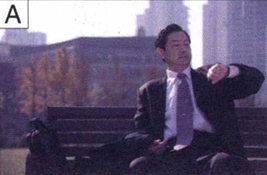


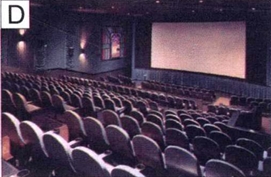
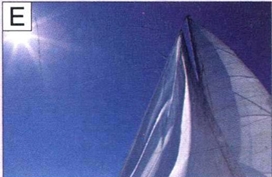
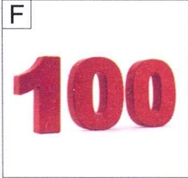
 ① ______
① ______
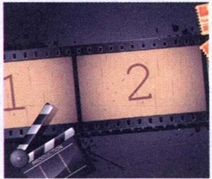 ② ______
② ______
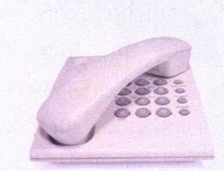 ③ ______
③ ______
 ④ ______
④ ______
课文 Text 1 在办公室 In the office 13-1
Mén kāi zhe ne, qǐng jìn.
A: 门 开着呢, 请进。
Qǐngwèn, Zhāng xiānsheng zài ma?
B: 请问, 张 先生 在吗?
Tā chūqù le. Nǐ xiàwǔ zài lái ba.
A: 他出去了。你下午再来吧。
Hǎo de, xièxie!
B: 好 的, 谢谢!
A: The door is open. Come on in.
B: Excuse me, is Mr. Zhang in?
A: He’s gone out. Please come in the afternoon.
B: OK. Thank you!

New Word
1. 着 zhe part. used to indicate a state
课文 Text 2 在办公室 In the office 13-2
Nàge zhèngzài shuōhuà de nǚhái er shì shéi?
A: 那个 正在 说话 的 女孩儿 是谁?
Wǒ zhīdào tā de míngzi, tā xìng Yáng, jiào Yáng Xiàoxiao,
B: 我 知道 她 的 名字, 她 姓 杨, 叫 杨 笑笑,
tā jiějie shì wǒ tóngxué.
她 姐姐 是 我 同学。
Nàge shǒu lǐ názhe qiānbǐ de ne?
A: 那个 手里 拿着 铅笔 的 呢?
Wǒ bú rènshi.
B: 我 不 认识。
A: Who is the girl speaking?
B: I know her name. Her name is Yang Xiaoxiao. Yang is her family name. Her elder sister is my classmate.
A: What about the girl with a pencil in her hand?
B: That one I don’t know.

New Words
2. 手 shǒu n. hand
*3. 拿 ná v. to hold, to take, to bring
4. 铅笔 qiānbǐn n. pencil
Proper Noun
杨笑笑 Yáng Xiàoxiao name of a person

Tīngshuō nǐ yǒu nǚpéngyou le? Wǒ rènshi tā ma?
A: 听说 你 有 女朋友 了?我 认识 她 吗?
Jiù shì wǒmen bān nàge zhǎngzhe liǎng gè dà yǎnjing, fēicháng ài xiào de nǚhái r.
B: 就是 我们 班 那个 长着 两 个 大 眼睛,非常 爱 笑 的 女孩儿。
Tā bú shì yǒu nánpéngyou ma?
A: 她 不是 有 男朋友 吗?
Nàge yǐjīng shì tā de qián nányǒu le.
B: 那个 已经 是 她 的 前 男友 了。
A: I heard you have a girlfriend now? Do I know her?
B: She is the girl in our class with big eyes and a smiling face.
A: She’s already got a boyfriend, hasn’t she?
B: That’s her ex now.
*5. 班 bān n. class, grade, team
*6. 长 zhǎng v. to grow, to develop
7. 笑 xiào v. to smile, to laugh


Qǐngwèn, zhèr lí Xīnjīng Bīnguǎn yuǎn ma?
A: 请问, 这儿 离 新京 宾馆 远 吗?
Bú yuǎn, zǒu lù èrshí fēnzhōng jiù dào.
B: 不 远, 走 路 二十 分钟 就 到。
Nǐ néng gàosù wǒ zěnmme zǒu ma?
A: 你 能 告诉 我 怎么 走 吗?
Cóng zhèr yìzhí wǎng qián zǒu, dàole qiánmiàn de lùkǒu zài wǎng yòu zǒu.
B: 从 这儿 一直 往 前 走,到了 前面 的 路口 再 往 右 走。
A: Excuse me, is Xinjing Hotel far away from here?
B: No, it’s about a 20 minutes’ walk.
A: Could you tell me how to get there?
B: Walk straight ahead from here and turn right at the first crossing.
8. 宾馆 bīnguǎn n. hotel
*9. 一直 yìzhí adv. straight, all along
10. 往 wǎng prep. to, towards
11. 路口 lùkǒu n. crossing, crossroads

注释 Notes
1 结构助词“过” The Structural Particle “过”
动词后加上结构助词“过”,一般用来表示过去有过的经历,这些动作行为没有持续到现在。例如:
A verb followed by the structural particle “过” usually indicates a past experience action which hasn’t lasted to the present. For example:
| Subject | Predicate | ||
|---|---|---|---|
| V | 过 | O | |
| 他们 | 来 | 过 | 我家。 |
| 我 | 看 | 过 | 那个电影。 |
| 我 | 去 | 过 | 中国。 |
在动词前边加“没(有)”表示否定。例如:
In the negative form,“没(有)”is added before the verb. For example:
| Subject | Predicate | ||
|---|---|---|---|
| 没(有)+V | 过 | O | |
| 他们 | 没(有)来 | 过 | 我家。 |
| 我 | 没(有)看 | 过 | 那个电影。 |
| 我 | 没(有)去 | 过 | 中国。 |
在句末加“没有”表示疑问。例如:
In the interrogative form,“没有” is added at the end of the sentence. For example:
| Subject | Predicate | ||
|---|---|---|---|
| V | 过 | O+没有 | |
| 他们 | 来 | 过 | 你家没有? |
| 你 | 看 | 过 | 那个电影没有? |
| 你 | 去 | 过 | 中国没有? |
2 关联词 “虽然……,但是……”
The Pair of Conjunctions “虽然……,但是……”
“虽然……,但是……” 连接两个分句,构成一种转折关系。例如:
The conjunctions “虽然……,但是……” connect two clauses, forming a complex sentence indicating an adversative relation. For example:
(1)虽然外面很冷,但是房间里很热。
(2)虽然汉字很难,但是我很喜欢写汉字。
(3)虽然是晴天,但是很冷。
3 动量补语 “次” The Complement of Frequency “次”
动量补语 “次” 常放在谓语动词的后边,用来表示动作发生、进行的次数。例如:
The complement of frequency “次” is usually used after the predicate verb, indicating the number of times that an action has taken place. For example:
| Subject | Predicate | |||
|---|---|---|---|---|
| V | 过 | Num + 次 | O | |
| 我们 | 看 | 过 | 三次 | 电影。 |
| 他们 | 坐 | 过 | 一次 | 飞机。 |
| 我 | (在这个商店)买 | 过 | 一次 | (东西)。 |
宾语是表示地点的名词时,动量补语可以放在宾语前,也可以放在宾语后。例如:
When the object of a verb is a place, the complement of frequency can be put either before or after the object. For example:
| Subject | Predicate | |||
|---|---|---|---|---|
| V | 过 | Num + 次 | O | |
| 我们 | 去 | 过 | 三次 | 北京。 |
| 他们 | 来 | 过 | 一次 | 中国。 |
| 我 | (上星期)去 | 过 | 一次 | 医院。 |
| Subject | Predicate | |||
|---|---|---|---|---|
| V | 过 | O | Num + 次 | |
| 我们 | 去 | 过 | 北京 | 三次。 |
| 他们 | 来 | 过 | 中国 | 一次。 |
| 我 | (上星期)去 | 过 | 医院 | 一次。 |
宾语是人称代词时,动量补语要放在宾语后。例如:
When the object is a personal pronoun, the complement of frequency should be put after the object. For example:
| Subject | V | 过 | O | Num+次 |
|---|---|---|---|---|
| 我们 | 找 | 过 | 他 | 三次。 |
| 他们 | 看 | 过 | 我 | 一次。 |
| 老师 | 叫 | 过 | 我 | 两次。 |

Comments